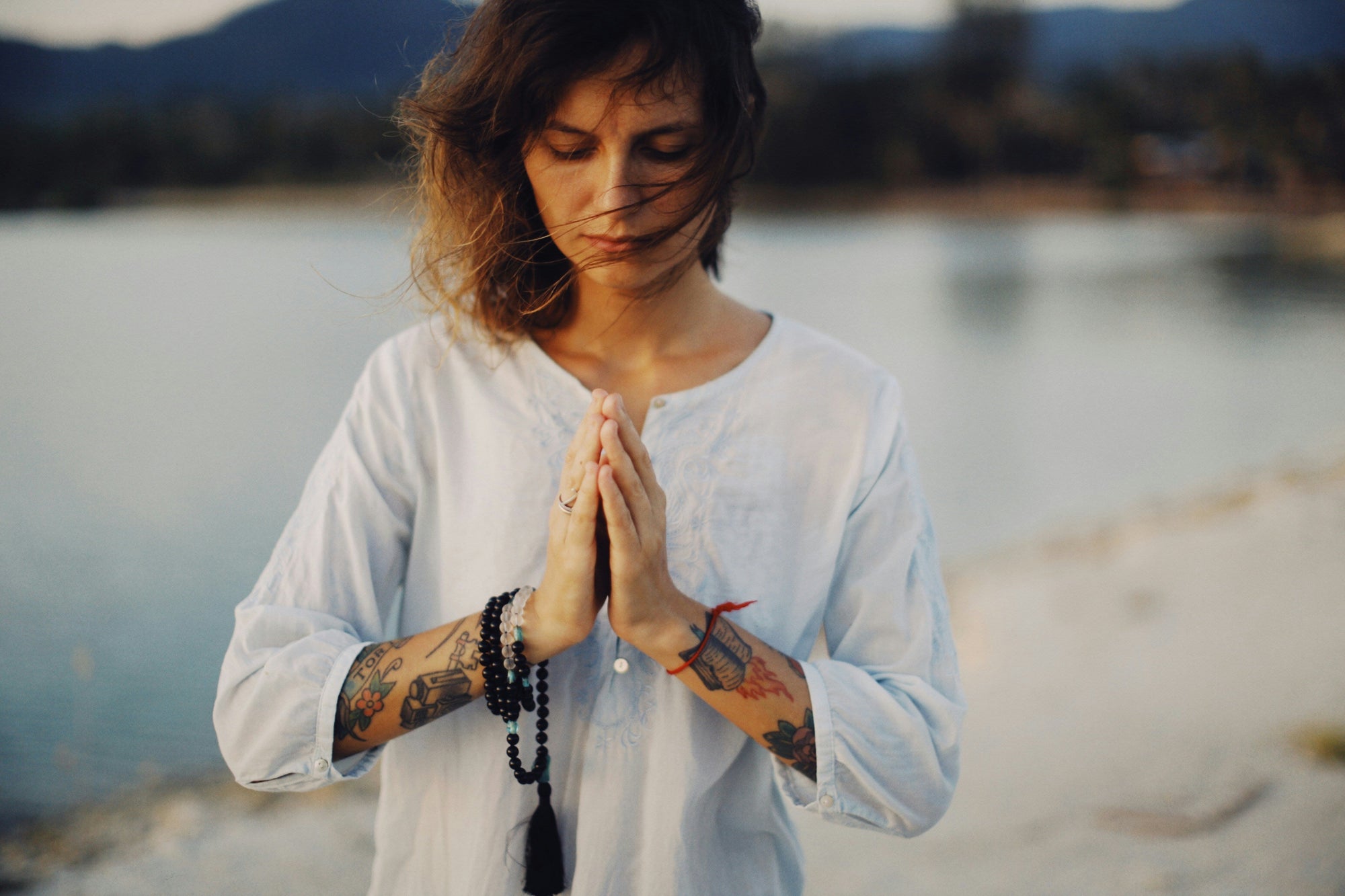The Mystique Of Malas
Posted on April 22 2024

Your Daily Companion for Mindful Living
In the world of spirituality and self-care, few artifacts are as important as the Mala. The delicate beaded necklaces, traditionally made of wooden or Rudraksha beads and often decorated with tassels, are more than just accessories; they are powerful tools for mindfulness, meditation and spiritual growth. We explain how Malas can influence our daily lives and where their roots lie.
What is a Mala?
The Mala, which has its origins in ancient Eastern spiritual traditions, is a string of 108 beads, traditionally used for prayer, meditation, and mantra recitation. The number 108 holds symbolic significance in various spiritual practices, representing completeness and the journey to self-realization. Each bead has its own meaning and helps to enhance the meditative experience.
Cultural significance and origin
In the Hindu and Buddhist tradition, the mala was used as an aid for monks and practitioners during meditation and prayer. Mala, which means "garland" in Sanskrit, is a sacred ornament for spiritual practice. For centuries, it has transcended cultural boundaries and has become a symbol of inner peace and mindfulness all over the world.
Using a Mala for meditation
Meditation with a Mala fosters focus, clarity, and inner tranquility. Here are a few tips on how to meditate with your Mala:
- Make your intention clear: Before you begin meditating, take a moment to set your intention or purpose. This could be anything from cultivating gratitude to releasing negative emotions. You can also dedicate your yoga practice to your yoga teacher.
- Choosing Your Mantra: Select a mantra or affirmation that resonates with your intention. It can be a traditional Sanskrit mantra, a phrase in your native language, or simply a word of personal significance to you.
- You should hold your mala in your dominant hand, with the first bead (the Guru bead) between your thumb and middle finger (don’t use your index finger, it stands for your Ego).
- Pull the next bead towards you while reciting your mantra or affirmation.
- Repeat your mantra with each bead. Allow yourself to sink deeper into meditation with each repetition. When you have reached the end of your mala and are back at the guru bead, you will have repeated your mantra 108 times. Once you have reached the end, you can slowly come back out of the meditation or, of course, do another round.
Taking Care of Your Mala
To maintain your Mala's energetic properties and ensure its longevity, follow these tips:
- Don't expose your Mala to harsh chemicals, perfumes, or excessive moisture.
- Keep your Mala clean by wiping it with a soft cloth, or use sage smoke or palo santo to cleanse it regularly. The Mala can also be recharged by placing it on a bed of Amethyst crystals overnight.
- Protect your Mala from dust and damage by storing it in a clean, sacred space or pouch when not in use.
How to integrate a Mala into Your Yoga Practice
Here are some ways you can integrate a mala into your yoga practice to deepen your connection to the practice and improve your mindfulness:
- Begin or end your yoga practice with a mantra using your Mala to center your mind and cultivate inner peace.
- Set the intentions for your yoga practice with your Mala and fulfill every movement with intention and mindfulness.
- Use your Mala to maintain a steady rhythm and focus when practicing pranayama (breathing techniques).
Embrace the Journey
In today's fast-paced world, the Mala is a timeless companion for anyone seeking inner peace and mindfulness. Modern Malas, made from precious stones and adorned with pendants instead of traditional tassels, offer a contemporary variation on this ancient practice and have now also found their way into Western culture. Whether for meditation, yoga or simply as a reminder of your intention, the Mala continues to offer comfort and guidance in our modern lives.
